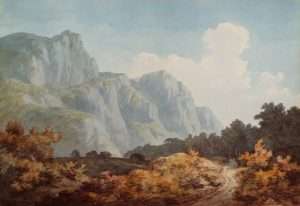As a visual artist, it’s important to have a good painting instructor. It’s not an easy task to find the right one for you. However, with the help of this article, you’ll be able to find the perfect instructor for you.
Here are some tips that will help to narrow down your search:
1. What is the best method for you? Should you take lessons in person or online? If in-person lessons are best for you, what kind of location do you prefer? Do you want to go to class at a local studio or a college? Are group or private lessons better for you? When trying to decide what kind of instruction is best for you, think about your needs and your schedule and then choose accordingly.
2. What kind of personality do you want in an instructor? Is there anything more important than personality when it comes to finding the right instructor? Personality can make or break an art class. It is important that you enjoy being around your painting instructor, both in and out of the classroom. By finding the right instructor with whom you feel comfortable, your art classes will be much more enjoyable and valuable to you as an artist.
Painting is a skill that takes a lifetime to learn. It can be frustrating if you are new to art, as there are so many different ways of learning and so many instructors to choose from. We have put together this blog to help art students make the right choice in a painting instructor.
A lot has changed in the art world in the last few years, and the Internet has made it possible for people to become artists at a much faster rate than ever before. You can get great tips and advice on different techniques online, and the Internet has also made it much easier to find an artist school or studio near your home.
There are thousands of talented artists out there who love to teach, and one of them could be right for you! There are many factors you may want to consider when deciding on an instructor: whether they specialize in teaching just beginners, or teach all levels; whether they offer private lessons; what kind of materials they use; whether they teach at night or during the day; even whether they offer classes in your neighborhood or will come to you. This article will give you some great information about finding an art teacher who is perfect for you!
– What kind of painter are you?
– What level of painting skill do you have?
– Do you learn better in group or private classes?
– Which art mediums do you want to learn?
– Do you prefer live instruction, via video or online class, or self-study?
– Do you want an instructor with a degree in art, or is it more important that they are talented artists?
– How much time and money can you devote to your art?
– Do you want to focus on one area like portrait, landscape, still life, drawing, or work in multiple mediums like oils and watercolors?
Asking yourself these questions can help narrow down your search for the perfect instructor. It can also help create a list of qualifications that will help you determine if the instructor is a good match for you. In the end it’s about finding the perfect balance of instruction for what YOU need. No two people are alike and neither are their skills and needs. Finding the right instructor for your needs may be more time consuming but in the long run it saves both time and money while also ensuring that you get exactly what you need from your instruction.”
We have all heard stories about how the artist set out to paint a masterpiece, only to have it ruined by unskilled instructors. In fact, I have had many students say that they do not want to attend any classes, because they are afraid of ending up with an instructor who is more concerned about their own profit than in teaching them how to paint. Fortunately for my business, this is a risk you can easily avoid.
0. First and foremost, choose an instructor who will provide you with superior service.
1. What exactly is superior service? Superior service is when your instructor or the staff at your chosen school provides you with excellent recommendations regarding the courses and books that you need in order to improve your painting techniques as well as advice on how to purchase those materials with the least amount of expense.
2. Not all instructors provide superior service.
3. In fact there are many instructors who will recommend inferior paints and brushes just so they can make more money off of you later on down the road by selling you the products that actually do work.
4. Make sure that your instructor has your best interest at heart before signing up for any painting classes or workshops.*
5. In addition, ask for a portfolio of some of their previous students
One of the most popular search requests is “How to paint.” It is clear that many people are interested in painting, and that if you have a talent for it, you can make a living by painting.
None of this should be news to anyone. The question is why someone, specifically you, hasn’t already learned how to paint.
The answer to this question is complicated. Painting isn’t as easy as it looks. But it’s not impossible either. It’s just hard enough that a lot of people quit before they get very far, because it seems like too much work for too little reward.
So how do you learn? There are two main options: take a class and hire an instructor, or teach yourself. Both have their advantages and disadvantages. Taking a class will give you access to more information from more sources than you could possibly hope to amass on your own, but hiring an instructor will give you personal attention and hands-on training.
A class will also put you around other aspiring artists who are working on the same thing as you, making it easier to ask questions and form connections with people who share your interests. On the other hand, hiring an instructor will provide expert instruction tailored to your needs and learning style (and hopefully save you
Art instruction is an interesting petri dish. It’s all about the teacher, which is, of course, the way it should be. But there are many facets to being a great teacher, and it’s almost impossible to know in advance how they’re all going to work together, especially if you’ve never seen that particular teacher before.
The more I think about it and teach classes and workshops, the more I believe that a student who makes her own decisions about what she’s willing to do, even if she doesn’t succeed at it right away, will be happier in the long run than a student who tries to do what she thinks the instructor wants.
It’s important for students to give their teachers feedback. It’s also important for students to be clear about what they are expecting from their art learning experience and not try to have it both ways.
This is a tricky balance. There are no easy answers!
In this article, I am going to share with you my 5 favorite artists. I will explain why each artist is important and how to find their work.
I am going to start with the most famous artist, Leonardo Da Vinci (1452-1519). Leonardo was an Italian painter, sculptor, mathematician and inventor. His father was a lawyer and not prosperous enough to provide for his family so his mother sent him to live with a family named the Albizzi’s. Leonardo had some talent for drawing so he was taught by Andrea del Verrocchio who he worked for as an apprentice. He did a lot of paintings that are displayed in the Uffizi Gallery in Florence Italy. Unlike many other painters of his time he made drawings of people and the proportions were perfect.
He also has many paintings that are displayed in museums around the world such as, The Last Supper in Milan, Mona Lisa in Paris and Lady Ann in London.
He also did a lot of sketches that were impressive but just sketches like the Vitruvian Man which shows all of man’s measurements except for one, his head which is smaller than his heart and stomach.(1)
Pablo Picasso (1881-1973). Pablo Picasso was


